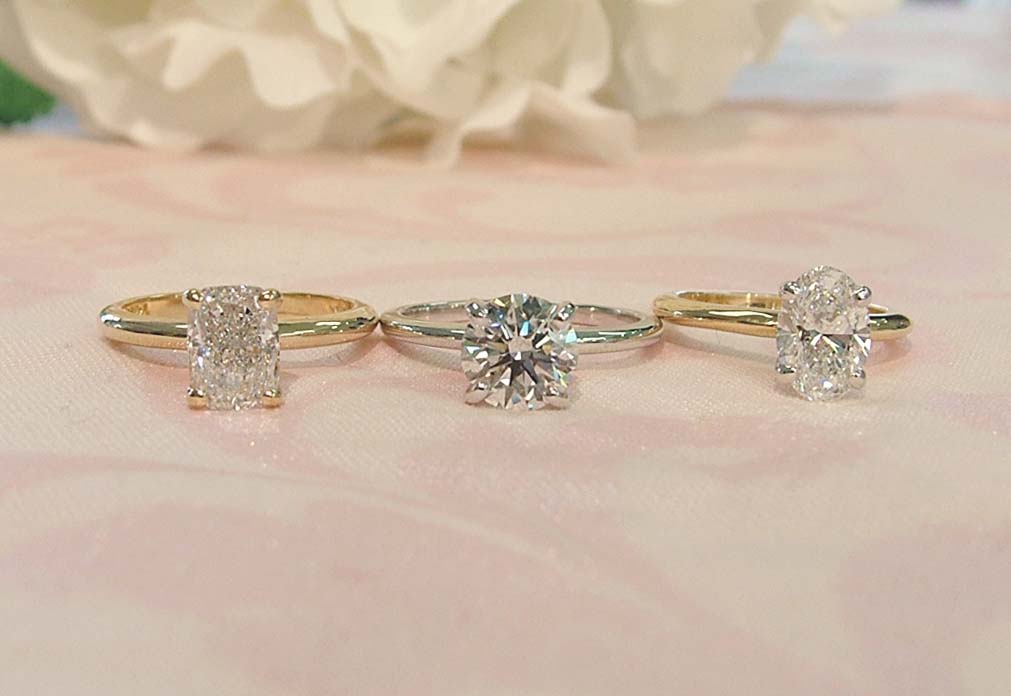
Although all lab grown diamonds are man-made, not all man-made diamonds are pure diamonds according to the Federal Trade Commission. Yes, it sounds confusing, even to us in the jewelry industry!
No worries—we’ll explain the difference. Here’s what you need to know about man made diamonds vs. real diamonds.
What is a lab grown diamond?
Back in 2012, the Federal Trade Commission began clarifying the definitions of diamonds into two distinct categories. They stated that diamonds were “a mineral consisting essentially of pure carbon crystallized in the isometric system that was either mined from the earth or grown in a factory.”
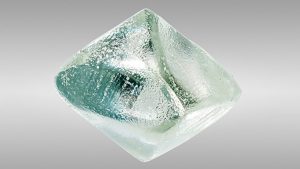
Which means that in order for a product to be considered a diamond, it had to be carbon crystallized in the isometric system with a hardness of 10 on the Mohs scale, with a specific gravity of 3.52 and a refractive index of 2.42. So chemically, optically, and physically, lab grown and mined diamonds are the exact same product. The difference is whether they were grown in a lab, or mined from the earth.
At Scott’s, we explain it like tomatoes grown in a garden (mined) or grown in a hot house (lab grown). Both are exactly the same, but hot house tomatoes cost less because they’re grown in a controlled environment.
How are lab grown diamonds made?
There are two primary methods for growing diamonds in a lab: High Pressure High Temperature (HPHT) and Chemical Vapor Deposition (CVD). Both techniques produce high-quality diamonds, but they differ in their approaches.
High Pressure High Temperature (HPHT)
The HPHT method mimics the natural conditions under which diamonds form in the Earth’s mantle. Here’s how it works:
- Seed Placement: A small diamond seed is placed in a chamber along with carbon (usually in the form of graphite).
- Applying Pressure and Heat: The chamber is exposed to extreme pressure (about 5-6 GPa) and high temperatures (about 1,300-1,600°C).
- Diamond Growth: Under these conditions, the carbon melts and forms a molten metal solution, which dissolves the carbon and allows it to crystallize onto the diamond seed, growing layer by layer.
- Cooling: Once the desired size is achieved, the diamond is slowly cooled to avoid cracking.
Chemical Vapor Deposition (CVD)
The CVD method involves breaking down carbon-containing gases to deposit carbon atoms onto a substrate. The process is as follows:
- Preparation: A diamond seed is placed in a vacuum chamber.
- Gas Introduction: The chamber is filled with carbon-rich gases, typically methane and hydrogen.
- Ionization: The gases are ionized using microwaves, lasers, or other energy sources, creating a plasma.
- Deposition: Carbon atoms break away from the gas molecules and settle onto the diamond seed, building up the diamond crystal layer by layer.
- Finalization: The diamond is removed from the chamber and undergoes cutting and polishing to achieve its final form.
Man made diamonds vs. lab grown diamonds: are they the same?
Well, lab grown diamonds technically are all man-made, but not all man-made stones are diamonds.
Some jewelry manufacturers are producing inexpensive, coated gems, and calling them man-made diamond simulants. Simulated diamonds include things like cubic zirconia (CZ), moissanite, and YAG. They can also include some natural clear gemstones like white sapphire, white zircon or even clear quartz.
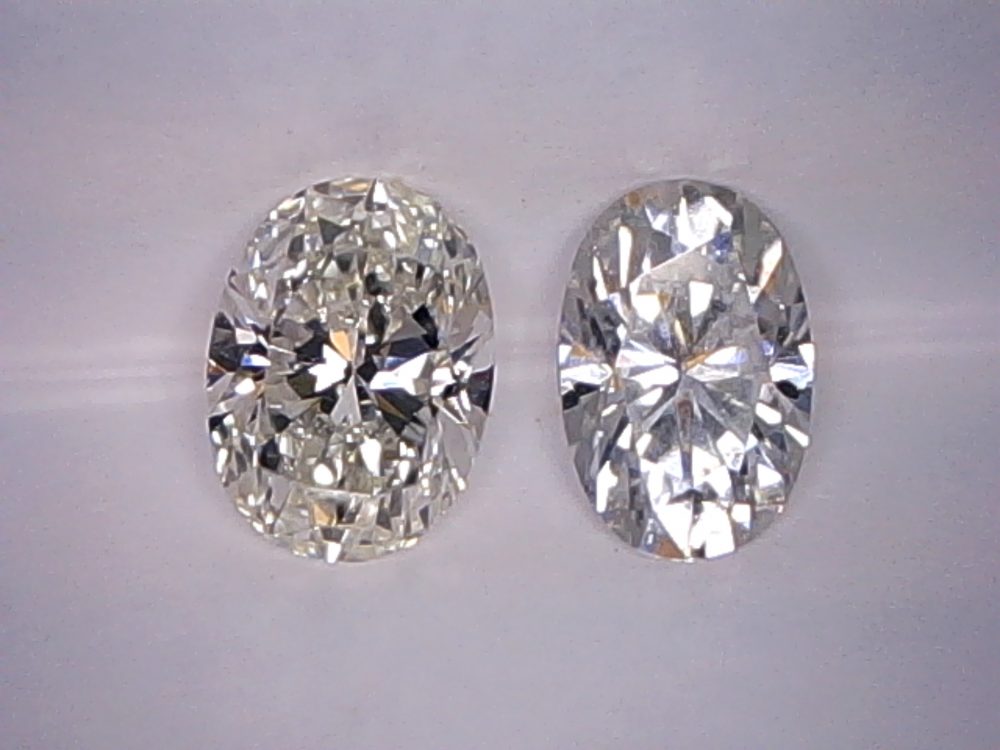
The problem is, the coating eventually wears off, and the gem will start to chip, scratch, or even break apart. This is where having a jeweler that you can trust is a real help!
How do I tell if a diamond is lab grown?
Lab grown diamonds are chemically the same as mined diamonds, and one of the only ways to tell the difference is for a jeweler to look under a magnifier for a laser inscription on the girdle of the diamond and determine the origin.
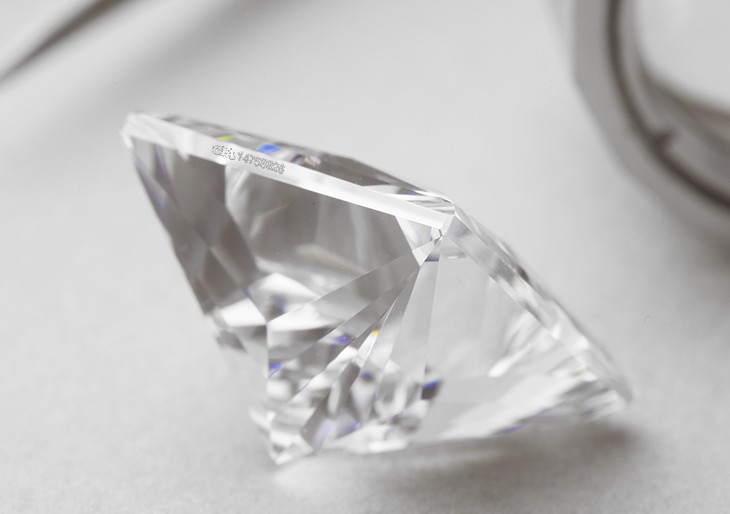
If there’s no inscription, then either the diamond is an older, mined diamond, or it’s not really a diamond, but a simulant.
Moissanites and cubic zirconia: are they the same as man-made diamonds?
When it comes to choosing an alternative to traditional diamonds, the market offers several options, including moissanites, cubic zirconia, and lab-grown diamonds. But are these stones the same?
What are moissanites?
Moissanites are gemstones made from silicon carbide and are considered a diamond stimulant. Originally discovered in a meteor crater, natural moissanite is incredibly rare, so the moissanite used in jewelry is typically lab-created. Here are some key characteristics:
- Brilliance: Moissanites have a higher refractive index than diamonds, giving them exceptional sparkle and fire.
- Hardness: With a rating of 9.25 on the Mohs scale, moissanites are very hard and durable, second only to diamonds.
- Cost: Moissanites are generally more affordable than diamonds, making them a popular alternative.
What is cubic zirconia?
Cubic zirconia (CZ) is a synthetic gemstone made from zirconium dioxide. It’s widely used as a diamond simulant due to its affordability and visual similarity to diamonds. Key points include:
- Appearance: While cubic zirconia can closely mimic the look of a diamond, it lacks the same level of brilliance and fire.
- Hardness: CZ ranks 8-8.5 on the Mohs scale, making it less durable than diamonds and moissanites. It is prone to scratching and losing its shine over time.
- Cost: Cubic zirconia is significantly cheaper than both diamonds and moissanites, making it a cost-effective option for jewelry.
What Are Lab-Grown Diamonds?
Lab-grown diamonds, also known as synthetic diamonds, are created in a controlled laboratory setting. They have the same physical, chemical, and optical properties as natural diamonds. Here’s what you need to know:
- Brilliance and Fire: Lab-grown diamonds exhibit the same level of brilliance and fire as natural diamonds.
- Hardness: With a Mohs hardness rating of 10, lab-grown diamonds are the hardest material available, just like mined diamonds.
- Cost: While they are less expensive than natural diamonds, lab-grown diamonds are generally more expensive than moissanites and cubic zirconia due to their identical properties to natural diamonds.
Comparing lab-grown diamonds vs. moissanites vs. cubic zirconia
Here’s a quick comparison to highlight the differences between moissanites, cubic zirconia, and lab-grown diamonds:
| Feature | Lab-Grown Diamonds | Moissanites | Cubic Zirconia |
|---|---|---|---|
| Composition | Carbon | Silicon Carbide | Zirconium Dioxide |
| Brilliance | High | Very High | Moderate |
| Hardness (Mohs Scale) | 10 | 9.25 | 8-8.5 |
| Durability | Very High | High | Moderate |
| Cost | Moderate | Lower than diamonds | Lowest |
| Similarity to Diamonds | Identical | Close | Visual mimic |
Are man made diamond simulants a good choice for an engagement ring?
For a ring that gets a lot of use and abuse, it’s best to stick with a harder gemstone for the center.
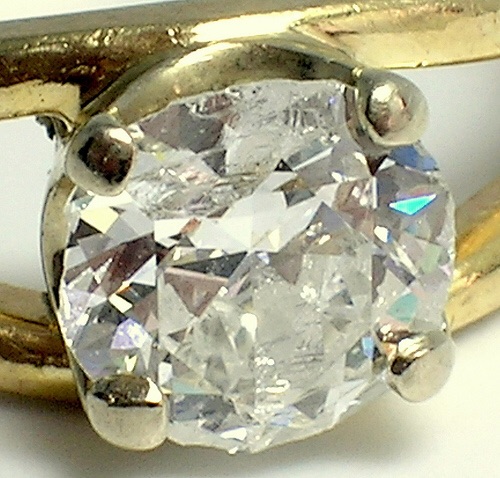
Man made diamond simulants like moissanite and cubic zirconia are generally not very expensive, but also can’t take the daily wear and tear like a mined or lab grown diamond. If they are just coated with diamond dust, that coating will eventually sluff off and break.
Benefits of lab-grown diamonds
Lab grown diamonds are a great option for jewelry because they are conflict-free, eco-friendly, and cost 50-70% less than mined diamonds. That’s a BIG deal!
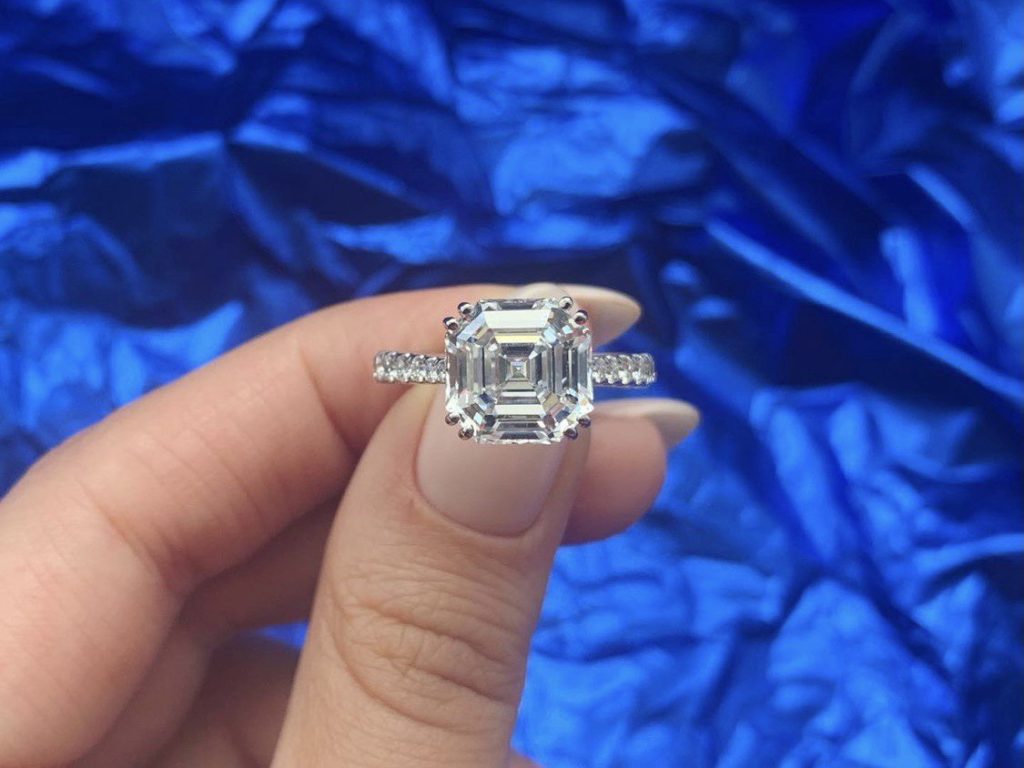
1. Ethical and Conflict-Free
One of the most significant advantages of lab-grown diamond rings is their ethical sourcing. Unlike mined diamonds, which can sometimes be associated with conflict and unethical labor practices, lab-grown diamonds are created in controlled environments without the exploitation of workers or communities.
At this time, about 30% of the world’s mined diamonds are found in Russia. The United States has recently sanctioned diamonds coming from this region because they are using diamond sales to fund their war with Ukraine.
2. Environmentally Friendly
Lab-grown diamonds have a significantly smaller environmental footprint compared to mined diamonds. The traditional diamond mining process is resource-intensive and can cause severe environmental degradation.
Lab grown diamonds only use a fraction of the natural resources to make in a lab, compared to the amount of energy and earth moving equipment used to mine diamonds from the ground.
3. Cost-Effective
In addition, lab grown diamonds cost much less than mined diamonds. They are typically 20-40% less expensive than their mined counterparts. Customers are able to get a diamond that is bigger, brighter, whiter, and cleaner than a mined diamond.
4. Identical to Mined Diamonds
Lab-grown diamonds are chemically, physically, and optically identical to mined diamonds. They are real diamonds with the same brilliance, hardness, and durability.
Keep the learning going: read our white paper on lab grown diamonds!
Interested in learning more about lab grown diamonds and how they are the most sustainable (and stunning) option for your jewelry? Download the whitepaper!
Still confused? No worries! Just give us a call at 614 336-4111 and we’d be happy to help you out.
How much would a
Hello Charlene, we’d love to give you a quote – give us a call at 614 336-4111, and we’ll talk!
Thanks,
Beth
I am interested in changing my settings on my engagement ring
We’d love to help you with that – give us a call at 614 336-4111 and we’ll talk more about changing your setting.
Thanks!
Beth